
Often there is a desire to make some changes in the interior design. Painting a decorative stone from gypsum, concrete or cement allows you to obtain an excellent finish, beautiful and practical at the same time. The work itself, associated with coloring, can not be called too complicated, but certain technological nuances, of course, are available. You will receive an updated interior with very little expense.
Do not use when painting decorative stone paint brushes (maklovits) and rollers. Consumption of paintwork will increase greatly, and ugly stains will appear on the surface.
Decorating a colored decorative stone is often used in landscape design and facade works, so the choice of paint should be treated particularly responsibly.
Painting provides for compliance with certain rules:
- Stone before painting is dried for 24-48 hours;
- The old lining is preliminarily sanded so that the paint does not crumble;
- The impregnations are used strictly in accordance with the instructions. It is also important to consider the compatibility of impregnations with dyes;
- To gloss the surface, you can use a varnish coating. However, it does not always look good, because the effect of the naturalness of the material is lost.
If you follow these tips, the coating will look natural, and the paint will last a long time.

Than to paint
For a good decoration of man-made stone, you can use acid or acrylic paint. These dyes penetrate deeply into the structure of the stone, quickly dry, and are resistant to fading. Before starting the coloring, be sure to check that the composition is in working order, without any lumps or clots. If necessary, the paint is diluted with water and diluted with a primer. Here is a brief description of the dyes:
- Acrylic. It is a water-based solution, which is ideal for painting gypsum stone. It is elastic, resistant to external influences, does not crack with time.

- Silicone and silicate. These dyes are mainly used for outdoor work. The binders in these formulations are silicone resins and liquid glass. The advantage of this coating, in addition to aesthetics, is a long working life. He is about 20 years old.
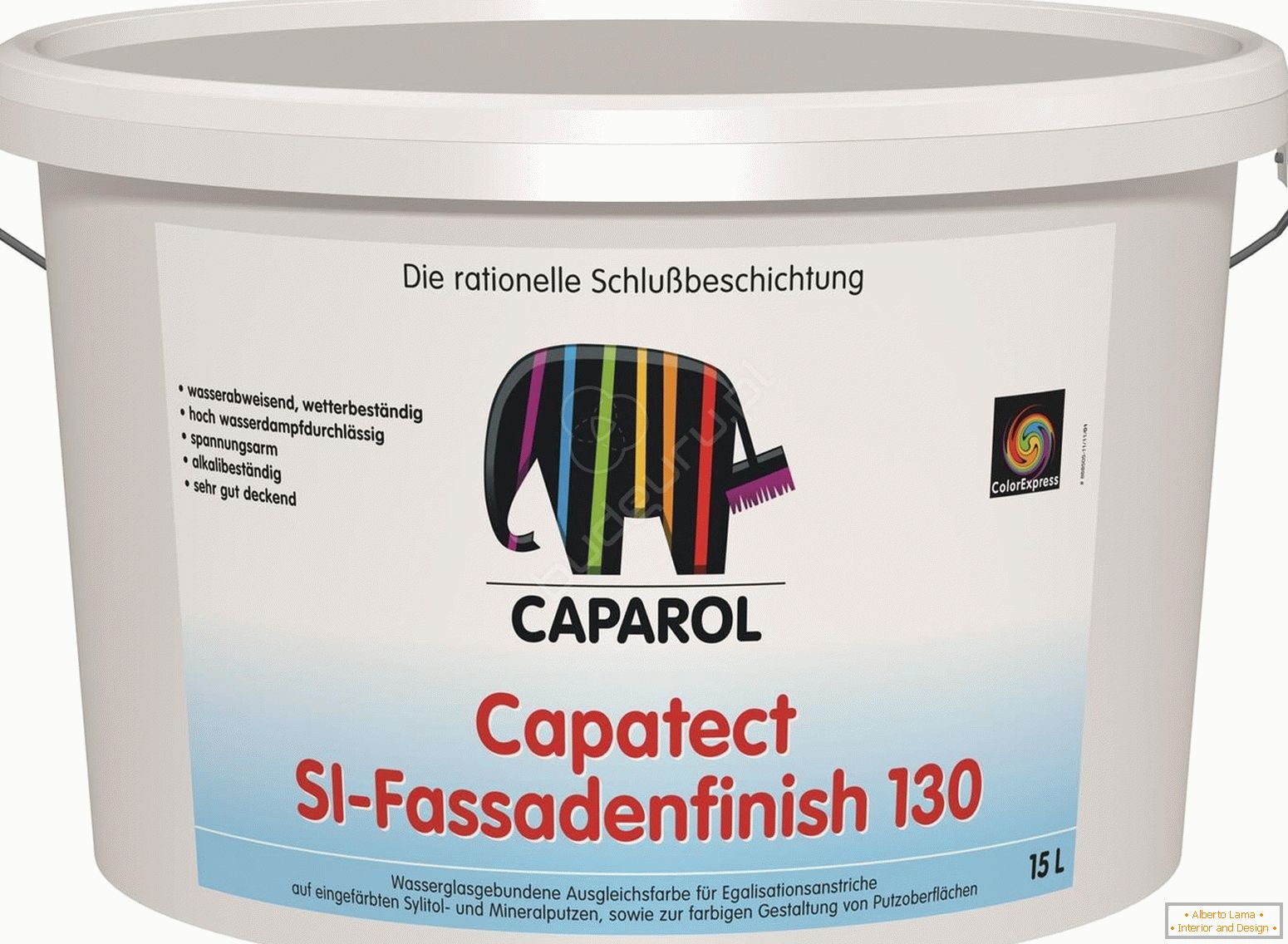
- Copper and iron vitriol. These solutions are used as an impregnation. They help increase the durability of staining. Iron vitriol gives a yellowish tint to the facing, copper - blue.
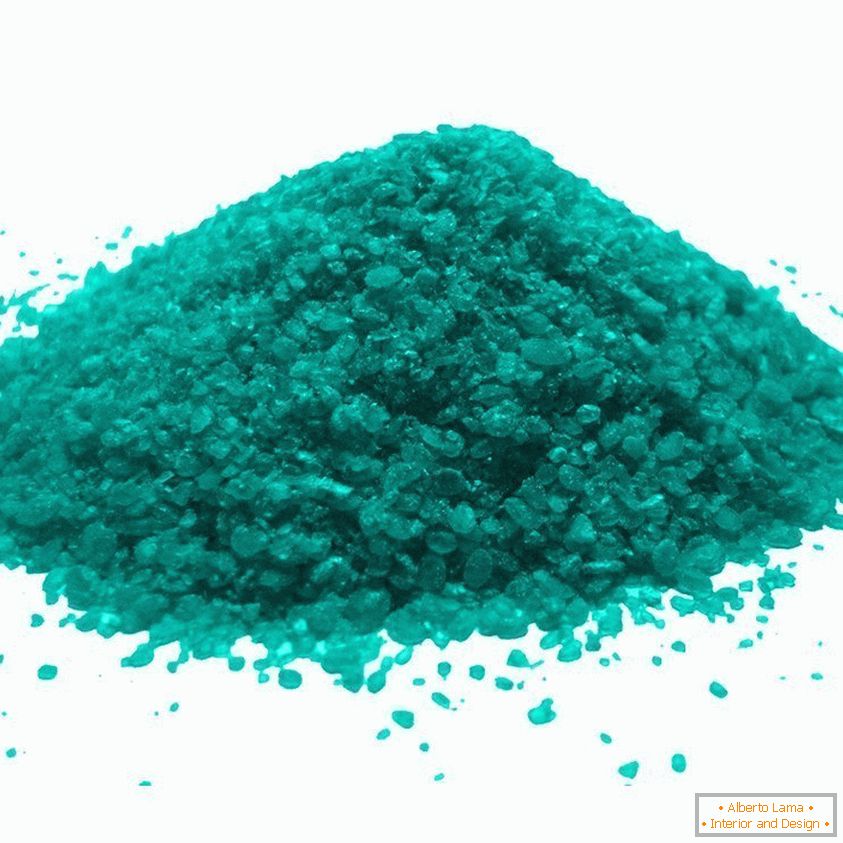
- Stain. For staining of gypsum and cement decorative materials, an acid stain or a composition for woodworking is used.
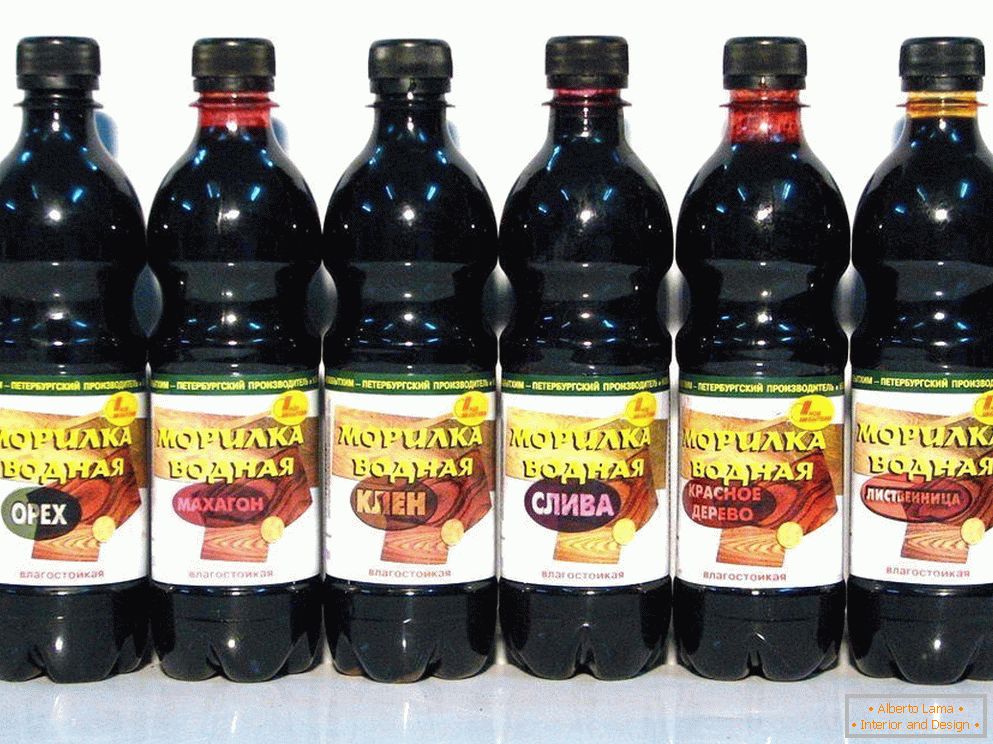
In addition, for impregnation impregnation with a "wet" effect is applied, as well as dyes, which make gypsum stone similar to natural. The use of lacquers allows you to get a matte or glossy surface with gloss. Lacquer does not just adorn, but also protects the surface from abrasion over time.
To ensure that the coating is as durable as possible, it is applied in two or three layers. In this case, the stone acquires a slightly darker shade.

Brush or airbrush
What to apply for painting - brush or airbrush? - this question is asked by many novice masters. Both methods of work can be applied. The advantage of the airbrush is that it sprays the paint. As a result, a uniformly and uniformly colored surface is obtained. Changing the distance from which the paint is applied, it is possible to impart different shades to the gypsum stone. The airbrush is great for making smooth transitions between shades and dimming convex areas. It is advisable to use several sprayers with different colors. This will speed up the work and will allow you to obtain an extraordinary beauty result.
On sale there are different types of airbrushes. You can paint a decorative stone with the most budget airbrush - a spray gun. It is important to pay attention to the compressor when buying. It depends on the quality of the application of the composition on the stone.

Using a brush results in the stone being stained unevenly. Whatever qualitative brush is, streaks and divorces can not be avoided anyway. But it is indispensable for applying varnish to torn areas of the cladding. You can slowly process every pebble, direct or, conversely, weaken halftones, decorate it with streaks, characteristic of natural stone. The technology is the simplest: dipping the brush into the chosen composition and dyeing.

The peculiarity of gypsum stone is that it absorbs the dye unevenly. However, one should not be afraid of this, because the facing looks like a natural stone.
Self-coloring: the pros and cons
The main advantage of painting a decorative stone with your own hands is the ability to choose the material and shades so that the lined surface is in harmony with the interior interior design. A painted surface can imitate stone, wood or brickwork. It is possible to use several shades, smoothly passing from one to another. The drawback is only one: the work is painstaking, requires responsibility, creative approach and, of course, the desire to do something on their own. Otherwise, you risk spoiling everything.

Preparation of stone and paint for work
Before applying the dye, the surface should be carefully prepared:
- Remove dust and dirt, do not too moisten the surface;
- If necessary, the surface is ground;
- The decorative stone is treated with impregnation, and then dried.

A visual examination of the decorative stone is mandatory. It should not have any flaws.
It is easier to paint a new stone than to repaint an old one, since there is no need for polishing. It is enough to wash the surface, treat 2-3 times with impregnation, and you can directly start working.
See also: 75 photos of design ideas by their own hands 
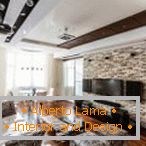



Technology of applying paint to gypsum stone
There are several ways to apply the dye to the lining. You can paint gypsum decorative stone both before and after laying. To paint separately each pebble is desirable for beginning masters. If you have any experience in this work, it is better to paint the already revetted wall. So you can more objectively evaluate the result. Tiles will look more natural and fit into the interior better. However, in this case it is necessary to take into account such moments:
- Responsible approach and patience;
- Preliminary drawing up of a staining plan;
- Correct selection of shade combinations;
- Calculations of shadows and light.
It is desirable to paint gypsum decor with two or three non-contrast colors. Do not be too zealous with a lot of shades, because the gypsum absorbs the dye unevenly. The same color can give several different tides.
Consider the most effective color options.
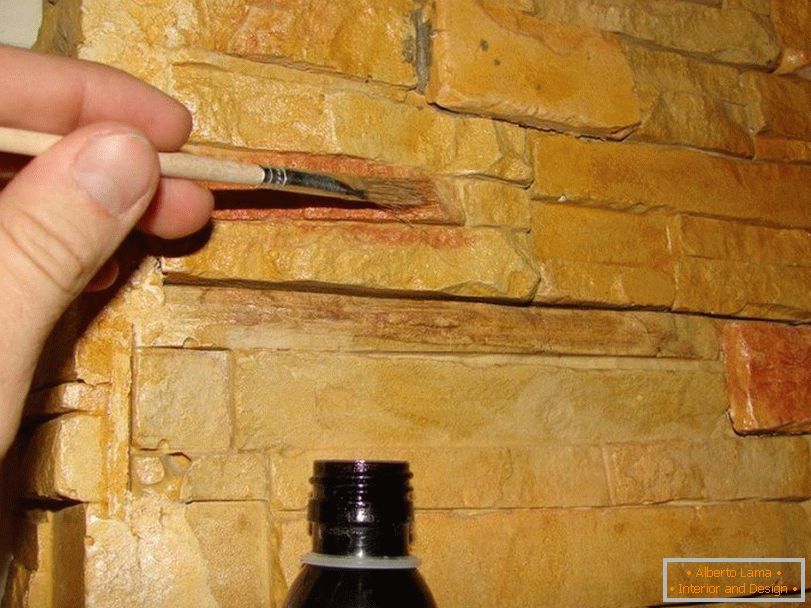
In the mass
This method is considered the best and easiest. In this case, the powder pigment is mixed directly into the gypsum, intended for casting the stone decor. It turns out a decorative stone, painted from the inside. In case of accidental damage, the white base will not appear. Convex parts of the stones can be painted with an ordinary brush. The color solution has this composition.
- Pigment - 0.5 teaspoons;
- Water - 0.2 l;
- Acrylic primer - 0.2 liters.

After the stone hardens, it remains to remove it from the mold, put it on a horizontal surface and apply a water-soluble varnish. There is a drawback in this method: the stone does not look quite natural, especially when viewed near.



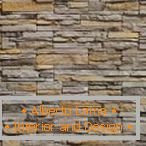

Surface method
This is a more labor-intensive process, which allows, however, to achieve maximum similarity to natural wild stone. The coloring pigment (or several) is bred in water, the brush dipped in a solution and impregnated with a stone. When adding 30 to 50% acrylic primer, the color is stronger. After the "background" is prepared, individual stones and areas are covered with a darker shade. Excessive care for the selection of the palette is not necessary, because the gypsum absorbs the dye differently each time. Even the same type of gypsum details can not be painted equally.



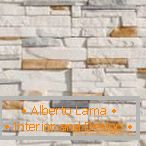
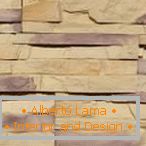
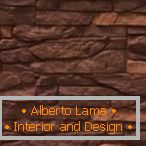
Finishing stage of painting
After the surface treatment is completed, it remains to cover it with several layers of varnish. Sometimes the stage with varnishing is missed, as many like the natural matte look of the facing, reminiscent of natural stones. If acid paint was used for the coating, the surface is washed and dried. Then it is covered with a hydrophobic compound.
See also: Decorative pillows with your own hands - ways of creating and ideas 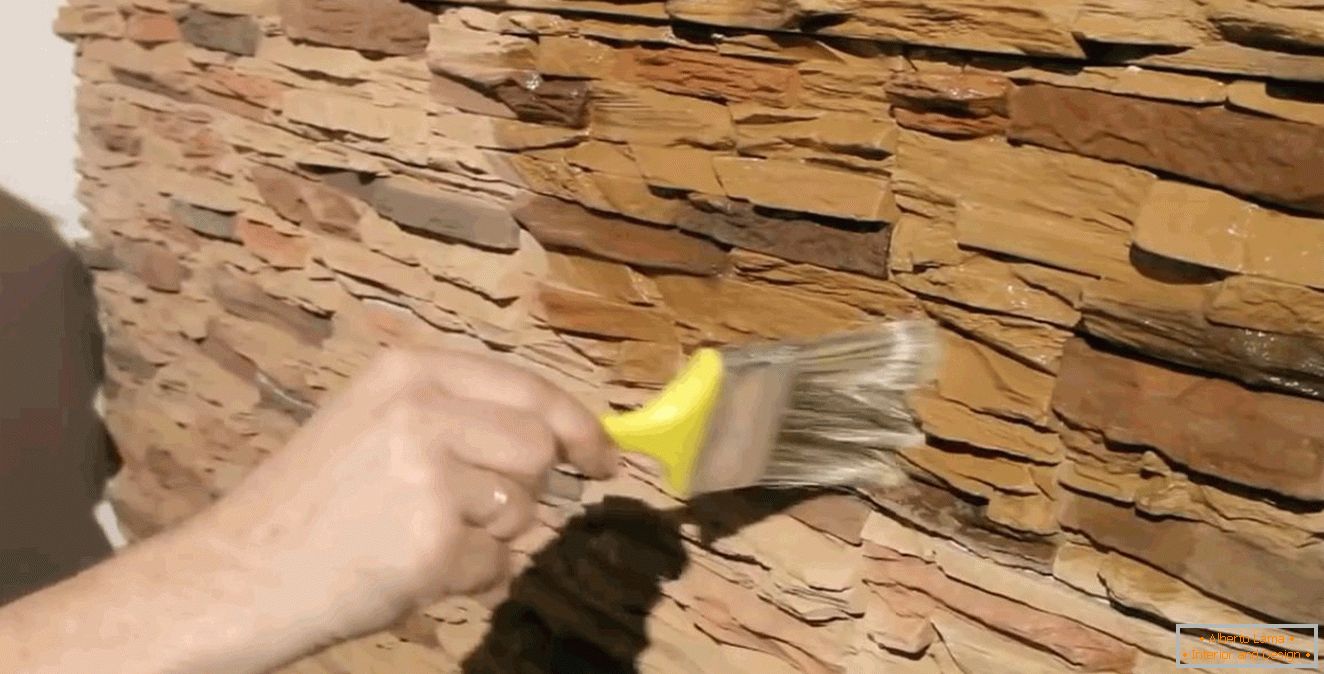
Unusual painting
In addition to painting with conventional compounds, there are several non-standard options that will allow you to create with your own hands a magnificent "palace" decoration of the interiors of a house or apartment.
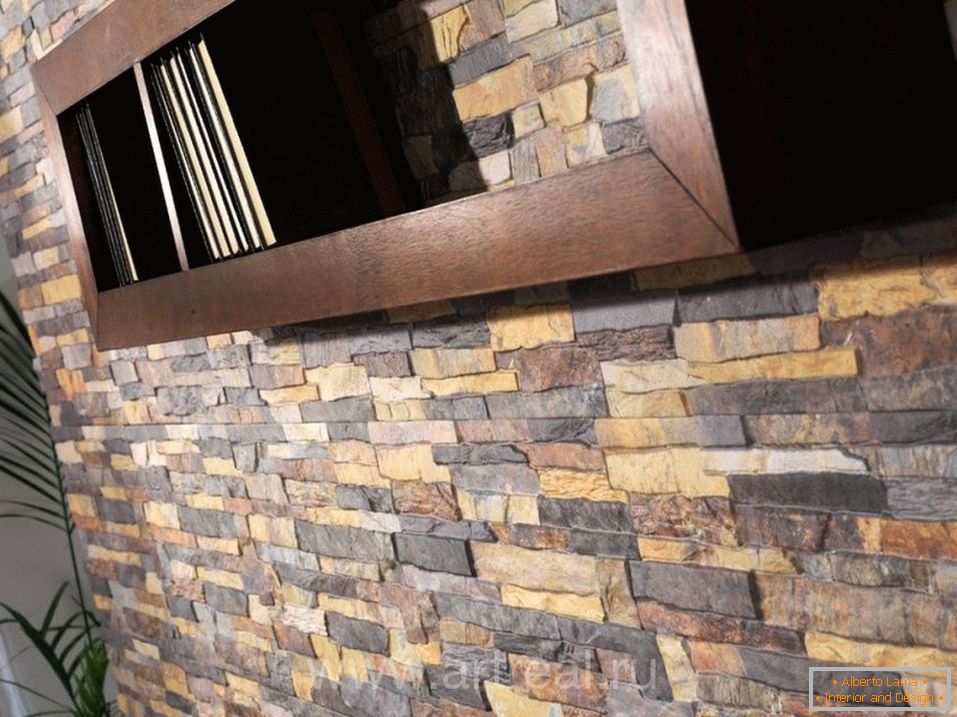


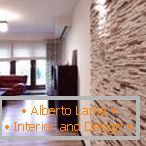


Under the old marble
If you like the effect of aging surfaces, you can make it so that the artificial stone looks like an old marble. The coloring technology is as follows:
- The acquired lining material is kept in a darkened room for 48 hours. If the artificial stone is made independently, it is pre-dried. The maximum permissible drying temperature is 55 degrees;
- Preheat the linseed oil. This work requires maximum caution, you need to perform it in protective gloves;
- Using a flute brush, the material is covered with linseed oil, preferably in 2 layers. It is necessary to ensure that the stone is processed evenly, without missing;
- It remains to wait a little while, and soon the gypsum surface turns out to be stained with veins, like an old marble. It turns out a beautiful finish for the kitchen or fireplace area.


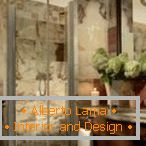
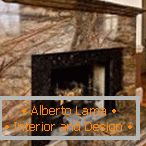

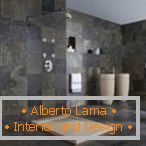
Under the terra cotta
The surface is treated with terra cotta with rosin and shellac varnish, which are dissolved in technical alcohol. The principle of painting is the same as for marbling. The effect of terracotta also appears after a while.

Creating a Bronze Reflection
To obtain a bronze reflow on the surface, materials are prepared and perform actions in a certain order:
- On the surface, varnish is applied so that it is well impregnated with gypsum;
- The product is dried. As a rule, this takes 8-10 hours;
- The bronze powder is mixed with the varnish, then the product is processed into 2 layers;
- The material is thoroughly dried;
- A mixture is prepared: 0.3 liters of water 0.1 liters of acetic acid and 10 g of silver nitrate;
- Apply to the surface of the finest layer of bronze powder, top coat with solution. This leads to an oxidation reaction;
- The surface is wiped with a piece of velvet.

To enhance the effect, wax, dissolved in turpentine, is applied to the surface from gypsum. This must be done until the material is saturated with the solution (the latter will cease to be absorbed). Lining with such a coating can be washed, while it does not lose its properties.
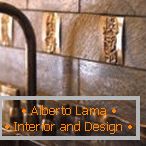
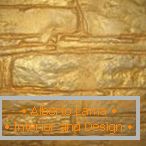
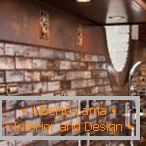

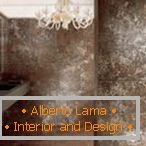
Staining with stain
Stain allows you to get very beautiful and unusual surfaces. You can apply it with a spray gun, but the best result is obtained when the product is dipped into a solution. A little warm stain, lower it for a couple of seconds gypsum stone, and then dry it. If necessary, the product is pre-wiped.

Conclusion
As you can see, painting a decorative stone is not very difficult, but it requires accuracy. If you follow the instructions for applying coloring compounds, you have a chance to do the job "excellent" and get a result that will please you for a long time.



